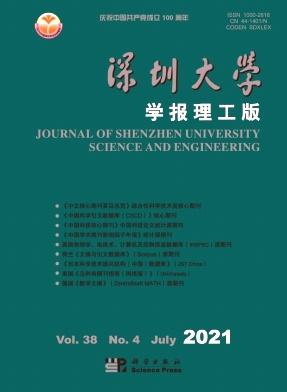基于机器学习的城市轨道车站短期客流预测方法
Q4 Engineering
Shenzhen Daxue Xuebao (Ligong Ban)/Journal of Shenzhen University Science and Engineering
Pub Date : 2022-09-01
DOI:10.3724/sp.j.1249.2022.05593
引用次数: 0
摘要
One of the effective ways to improve the operational efficiency of the rail system and achieve intelligent operation of rail transit, based on machine learning algorithm theory, combined with the passenger flow characteristics of rail transit stations such as time, space, and external influencing factors, a lightweight gradient boosting machine (LightGBM), long short term memory (LSTM), and LightGBM-LSTM fusion model for station short-term passenger flow prediction are established, Simultaneously constructing differential autoregressive integrated moving average (ARIMA) and extreme gradient boosting (XGBoost) models as control models for predictive experiments. Taking the swiping data of the Hangzhou subway ticketing system in China as an example, Five subway stations (residential type, work type, mixed residential and work type, shopping type, and transportation hub type) and three accuracy evaluation indicators (average absolute error, root mean square error, and average absolute percentage error) were selected to quantitatively evaluate the predictive accuracy of different models本文章由计算机程序翻译,如有差异,请以英文原文为准。
Machine learning based method for forecasting short-term passenger flow in urban rail stations
交通压力的有效途径之一.为提高轨道系统的运行效率,实现轨道交通智慧化运营,基于机器学习算法理 论,结合轨道交通车站的时间、空间及外部影响因素等客流特征,建立轻量的梯度提升机(light gradient boosting machine,LightGBM)、长短期记忆(long short-term memory,LSTM)及 LightGBM-LSTM融合模型的车 站短时客流预测模型,同时构建差分自回归移动平均(autoregressive integrated moving average,ARIMA)和极 限梯度提升(extreme gradient boosting,XGBoost)模型作为预测实验的对照模型.以中国杭州地铁自动售票系 统刷卡数据为例,选取了5种地铁车站(居住类型、工作类型、居住工作混合类型、购物类型及交通枢纽类 型)和3个准确性评价指标(平均绝对误差、均方根误差及平均绝对百分误差),量化评价不同模型的预测准
求助全文
通过发布文献求助,成功后即可免费获取论文全文。
去求助
来源期刊

Shenzhen Daxue Xuebao (Ligong Ban)/Journal of Shenzhen University Science and Engineering
Engineering-Engineering (miscellaneous)
CiteScore
0.90
自引率
0.00%
发文量
14
 求助内容:
求助内容: 应助结果提醒方式:
应助结果提醒方式:


